haptic feedback
Latest
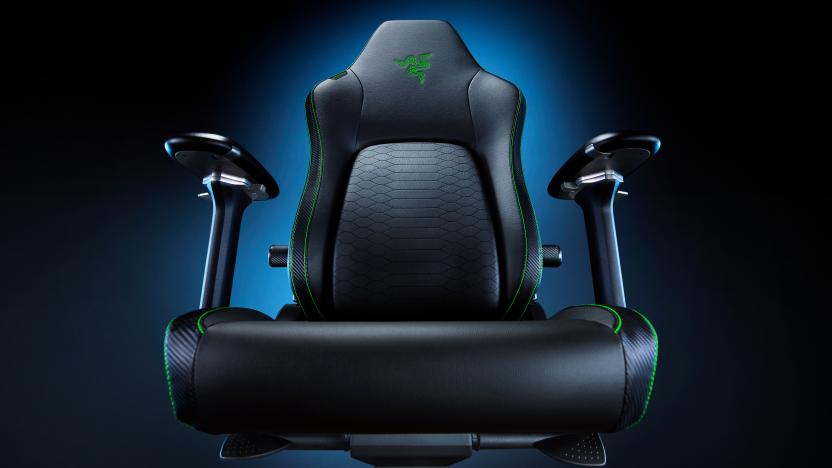
Razer updates its Iskur gaming chair with a ‘6D’ lumbar system for CES 2024
Razer’s new accessories at CES 2024 are every bit as lavish as you’d expect. At this year’s convention, the company has a follow-up to its first gaming chair, an 11-port USB-C dock, a gaming cushion with HD haptics and a monitor-mounted light bar with Chroma RGB illumination.
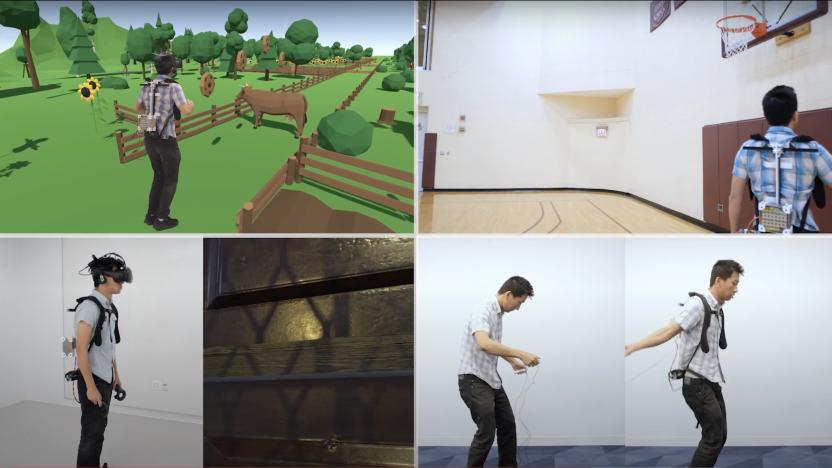
The JumpMod haptic backpack makes virtual leaps more realistic
The untethered device provides a more convincing illusion of vertical movement than today's best VR visual tricks alone.
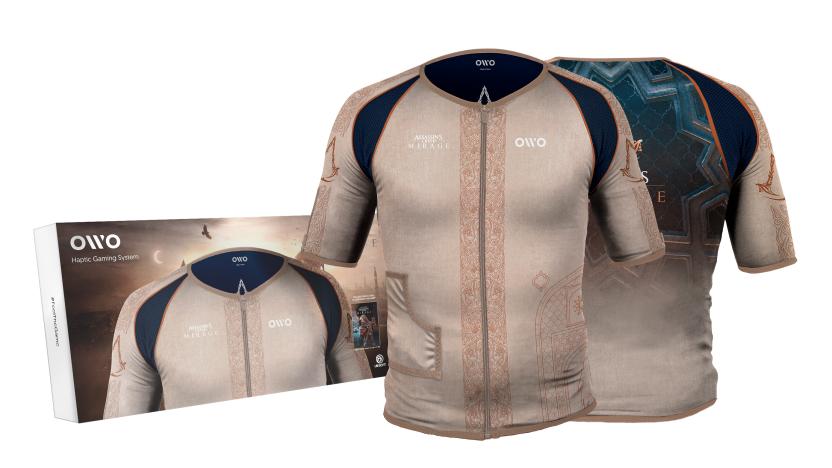
Assassin's Creed haptic shirt will make you feel 'exclusive sensations never felt before'
Assassin's Creed Mirage will let you 'feel' parkour through a haptic shirt. Really.
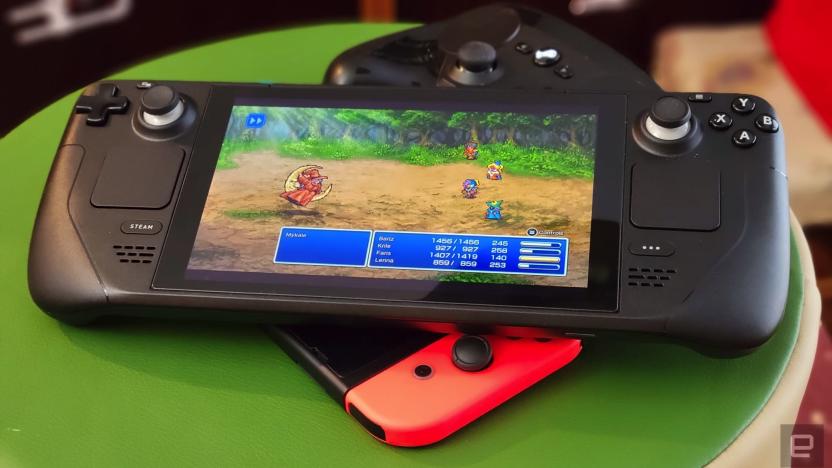
Valve is the latest company to be sued by Immersion over its Steam Deck rumble tech
Immersion Corporation has been suing companies over its rumble technology since at least (checks archives) 2004, and now it has a new company in its sights.
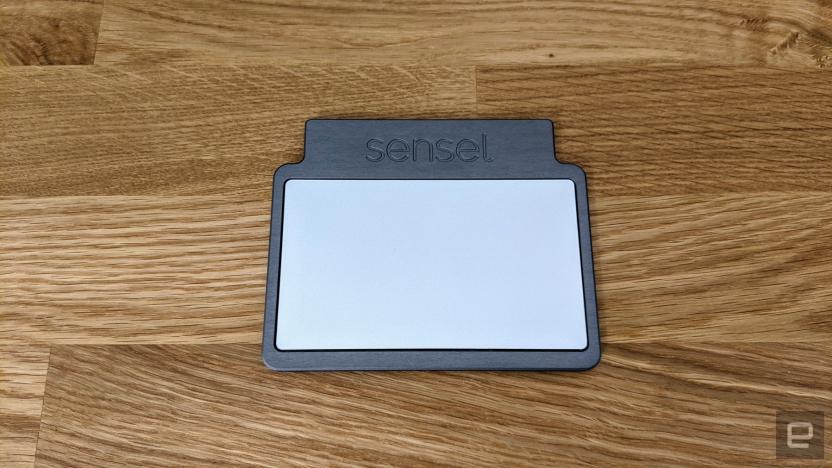
Sensel's touchpad tech could bring realistic haptics to Windows laptops
Sensel wants to bring its shape-shifting touchpad to laptops.
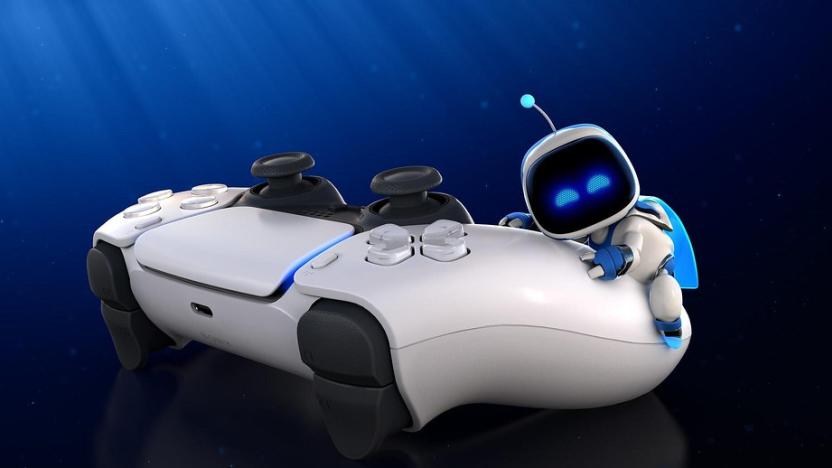
PS5 developers explain how the DualSense controller changes gameplay
Developers share how they'll put the PS5 DualSense wireless controller to use.
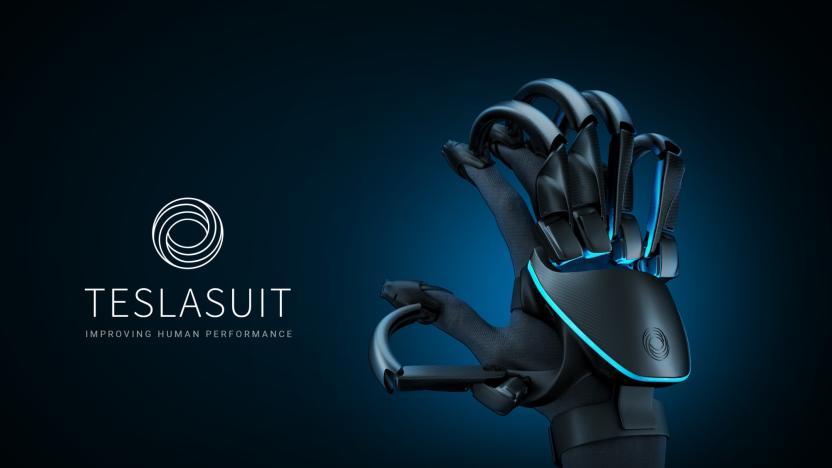
Teslasuit has a VR glove to go with its full-body haptic suit
For a fully immersive VR experience, one piece of equipment which still hasn't become widely available is a haptic glove which can provide tactile feedback to let users 'feel' virtual environments. Now, the company working on a full-body VR suit has announced a VR-powered glove, the Teslasuit Glove, which can detect movements of the wearer's hand and provide tacticle feedback.

Netflix experiment rumbles your phone during shows
Netflix's Hack Days tend to produce at least one or two genuinely practical ideas, and that's certainly true for its 2019 efforts. One of the biggest experiments from the in-house event, Project Rumble Pak, syncs its namesake haptic feedback effects to key moments in videos -- you could feel every explosion and punch. You'd only experience this on a mobile device, of course, but it could give you a good reason to watch on your phone instead of waiting to reach your TV.

Sony envisions 'clothes' with haptic feedback for PSVR
Sony might have grander virtual reality ambitions for the PlayStation 5 beyond a headset and traditional controllers to let you play games Ready Player One-style in a body suit. It filed a patent for a VR glove with haptic feedback, and suggested it may even bring the tech to other clothing, meaning you could potentially "touch" an in-game item when you pick it up, feel every blow in Call of Duty or get a sense of what it's like to be sacked in Madden.

This pocket-sized gesture controller aims to replace your mouse
If a new Indiegogo project has its way, you could soon be waving goodbye to that old, beloved mouse of yours. Meet Flow, a small gadget that pairs with your desktop or laptop and can be programmed with shortcuts to your most frequently used actions. At launch, Flow is said to offer support for more than 30 applications, including popular ones like Final Cut Pro X, Photoshop, Premiere, SoundCloud, Spotify and YouTube. With Spotify, for example, you could set up Flow to skip tracks by simply making a swipe gesture over the device, among other things. Right now, most of Flow's information points to the peripheral being used with desktops or laptops, but the company does note that there could be support for mobile applications in the future. The Flow Indiegogo page appears to be doing really well thus far, so be sure to check out the crowdfunding page if you want to see this get made.

ForcePhone from Nokia Research, HIIT sends positive vibes with a squeeze
Most device vibration technology is used as pure feedback -- either confirmation that you've pressed something or that you've come across an obstacle. If a prototype developed by Nokia Research and the Helsinki Institute of Information Technology ever translates to production, however, it'll be as much a part of personal phone conversations as a soft voice or a cheeky text message. The modified N900 attaches a resistor that responds to a squeeze at four different pressure levels, and doles that out during a traditional or Skype-based call as a vibration on the other end. As you'd imagine, the aim is to give family, friends and lovers the closest they'll get to a hug (or the occasional frustration) when the distance is just too great for an in-person visit. Don't hold your breath for an extra-lovable Lumia anytime soon: there's no mention of any near-term production plans, and any adoption would require a platform switch just to get started. But if we ever see "reach out and touch someone" become a lot more than a slogan, we'll know where it came from.

Nokia patents haptic system to simulate linear motion, assist with navigational route guidance
The crew in Espoo have just added a new patent to the arsenal that promises to add a refined level of haptic feedback to the user experience. Fundamental to Nokia's plan is a matrix of independent haptic devices that remain stationary, but combine to simulate the sensation of linear and circular movement. Not only could the enhanced feedback bring a new level of interaction to the software interface, but Nokia also hypothesizes that the system will be useful for providing navigational route guidance -- say, without the need for visual or auditory feedback. Given the company's other research in the field of haptic systems, it seems Nokia's future may be full of good vibrations, indeed.

'Free form' lens over mobile display could improve audio and haptics, says Motorola patent filing
It's hard to tell exactly what Motorola is thinking of here, but it probably isn't a billowing sheet of fabric stretched loosely over the face of a smartphone -- even if that's what it looks like. Instead, this appears to be a patent application for a "free floating display lens" that helps the panel of a mobile device to be used as a Beo-style acoustic speaker. The idea is that you can get louder and less resonant sound without having to dedicate more precious real estate to a larger traditional speaker unit. The application also talks about generating haptic feedback on the lens, using the same underlying piezoelectric structures that would power the audio. Creating vibrations this way could require "eight times" less voltage than current methods while also delivering a higher-amplitude sensation. Merge that with KDDI's weird vibrational speaker technology and the results could be deafening.

Patent application highlights Apple's continued flirtation with haptic feedback
We could all use a little feedback, right? Even Apple. The company has been toying around with the concept of haptic feedback for a while now, at least so far as patent applications are concerned. Another application filed in November or 2010 has surfaced. Of course, what we told you back in 2009 about the tenuous connection between an application and an actual product is as relevant as ever. Still, Apple's concept for a "tiered haptic system" which "may use one or more arrays of shape change elements to provide a wide range of tactile feedback" demonstrates that, at least as of late 2010, Cupertino was still working to rethink the way it sees touchscreens.

Hands-on with AT&T Labs prototypes: ShadowPuppets and haptic steering wheel
We're not done with the AT&T prototypes yet. After putting our rears in the seat of a Porsche 911 and turning our questionable English into even more questionable Spanish, Ma Bell gave us a glimpse at some super rough devices fresh from the labs. The first one we got our hands on, really didn't need us to put our hands on it. ShadowPuppets sticks a webcam to a pico projector (literally... with gaffers tape) to create a touchless "multitouch" interface for your phone. Rather than have friends gather around your tiny iPhone display or force a person to awkwardly reach across you and tap on your handset, this concept lets anyone simply cast shadows to control the interface. It's not terribly dissimilar from a number of other projects out there, except it's specifically geared at turning smartphone interaction into a social experience. The demo required the assistance of an Alienware laptop, and the pinch to zoom function was a little wonky to say the least. Still, it was pretty easy to see how this might prove useful in daily life. The other concept on hand was the haptic feedback steering wheel the company dreamed up with help from Carnegie Mellon. While the research may sound compelling, the device it self couldn't be any rougher around the edges... literally. The design consisted of roughly cut chunks of foam taped (this time with packing tape, we believe) haphazardly to a game controller. On each piece of foam was a tiny vibrating actuator connected to an Arduino that dangled below in a vaguely menacing tangle of cables. The sensation as the vibrations travel in circular patterns (clockwise to indicate a right turn, counter clockwise for left), was strange to say the least. But, as the cycles sped up and the turn approached we grew less uncomfortable with the feeling of a vibrating steering wheel. And we actually found the increasing tempo an easier way to discern when a turn was approaching than hearing a robotic voice shout out, "turn left in 500 feet." Check out the gallery above for some not so glamorous shots of the future of tech.

Cadillac focuses on safety with vibrating drivers' seats, other accident avoidance tech (video)
To say General Motors' Cadillac division is taking safety seriously on its upcoming 2013 vehicles would be an understatement. The automaker recently announced its high-tech accident avoidance packages dubbed Driver Awareness and Assist, the earlier of which is set to debut this Spring on its new XTS model, moving along to the ATS by the summer. Driver Assist (set to release in the fall) packs goodies like Automatic Collision Preparation and auto-braking, while the Awareness version aims to help keep you in your lane and safe from blind spots, among other things. Despite the differing monikers, both sport many of the same systems such as Adaptive Forward Lighting that can shift 15 degrees based on your turn, radar-based adaptive cruise control and Rear Cross Traffic Alert so you don't get sideswiped while backing up. Most notable among both is the company's Safety Alert seat -- AT&T Labs may be testing a force-feedback steering wheel, but GM's gone and planted haptic feedback into the drivers' bottom seat cushion. Essentially, using the radar, cameras and sensors around the car, the seat can rumble on its left, right or all around, in order to "nudge" you in situations such as getting too close to another car or veering out of your lane. You can also opt for audio cues if you're not fond of vibrations, or use both together. Of course, there's a whole lot more to it, so if you're curious to see it all in action you'll find a duo of videos and more information in the press releases planted after the break.

App turns Android tabs into math tools for the visually impaired (video)
Two high school students are taking part in a bit of an experiment at Vanderbilt University. The college's Medical and Electromechanical Design Laboratory (MED Lab) is working on an Android app that turns tablets into a teaching aid for the visually impaired. Areas of math that rely heavily on visual elements, such as algebra and calculus, prove problematic for students with poor eyesight. A common solution involves pipe cleaners, a cork board and push pins, to recreate graphs, but the method is quite slow. The MED Lab is looking to haptic feedback as a way to help the visually impaired identify lines, graph points and other data that is normally represented visually. For more details about the project check out the video after the break.

Controller prototype stretches thumbs for extra feedback
Video game feedback systems haven't changed dramatically since the implementation of "rumble" over a decade ago. Engineers at the University of Utah hope to change that with a new kind of controller. The prototype controller provides haptic feedback via small pads that sit under the player's thumbs. These pads can move in any direction, stretching the skin of the thumb, offering directional cues or simulating in-game events.The pads can mimic the usual game fare -- explosions and the like -- but they can also simulate more tactile sensations, like the "feeling" of crawling on the ground while prone in a shooter. Another example shows the pads indicating the direction that enemy fire is coming from, or simulating impact against a surface.It's a bit hard to grasp from the description alone, so we suggest you check out the video above for a peek at our possible future. Associate professor of mechanical engineering, William Provancher, hopes to see the controller in production in time for the next generation of game consoles.

Hands-on with Immersion HD Integrator hi-fi haptics
It was just over a year ago when we met with the folks from Immersion, and they showed us a prototype handset packing its HD haptics technology. Since that time, the piezoelectric actuator that makes the tactile magic possible has gone into mass production, and the first commercial device packing such hi-fi haptics, the Pantech Element, hit store shelves. Immersion's got greater aspirations for its tactile tech, however, and its new HD Integrator platform aims to put high fidelity haptics in every handset. We got to sample the HD haptics goods once again and chat with Immersion about the new platform and its technology, so head on past the break to see what the company has in store.

GTA III for Android hits 1.3, brings Liberty City to the Transformer Prime
Select iOS and Android devices have had the ability to terrorize Liberty City while on-the-go since December, but sadly those with Transformer Primes thus far have been left out of all that fun. Luckily, an update to the game ends that double standard, enabling Rockstar's classic to run on ASUS' tablet and Medion Lifetabs everywhere. It doesn't just bring expanded hardware support to the table though, as amongst other "technical fixes," the release also heralds new video display settings, Immersion haptics support and the capability of installing the game on a SD card. And fans of tactility, know that controls on the Xperia Play have been reworked, and it now boasts full support for GameStop's wireless controller. Still here? You shouldn't be -- grab the update in the source link below.















